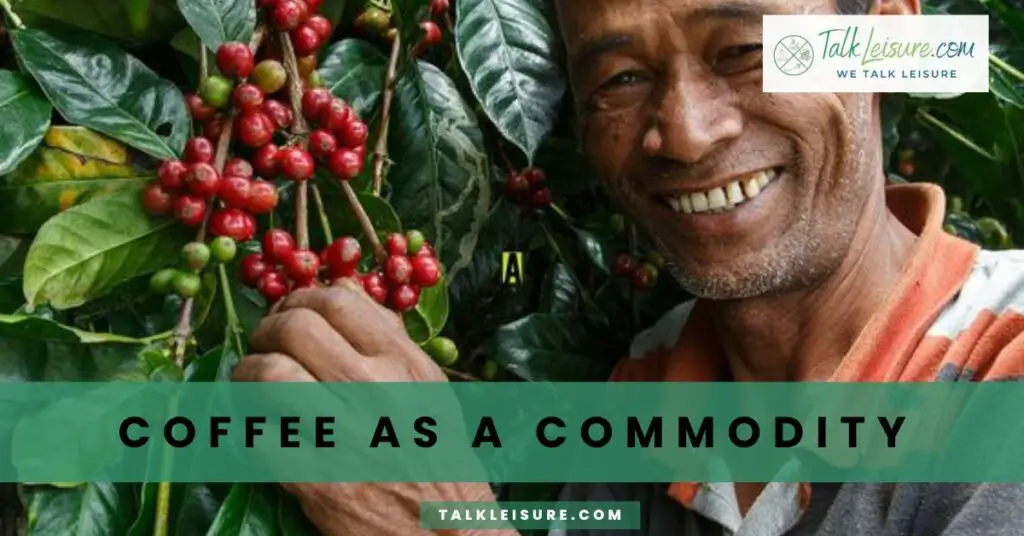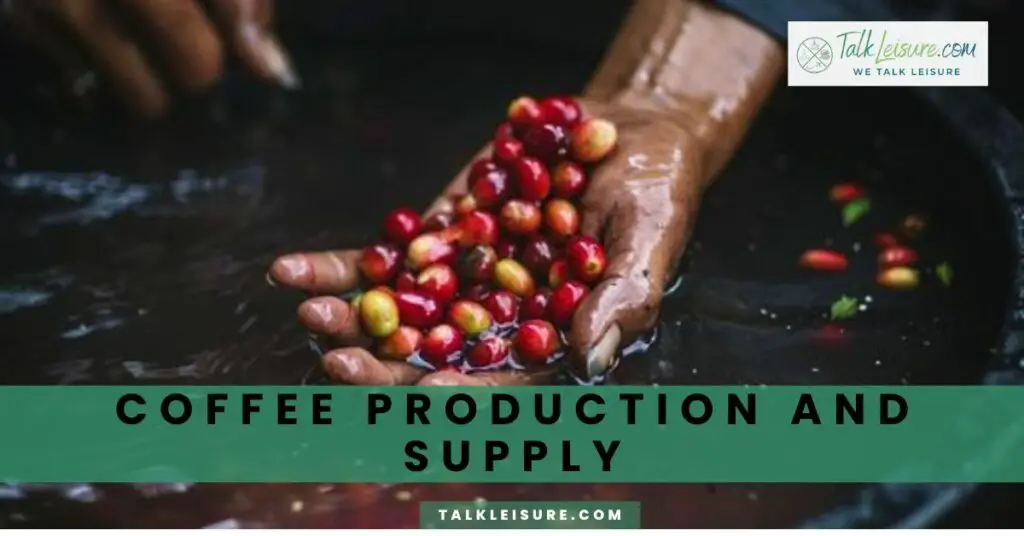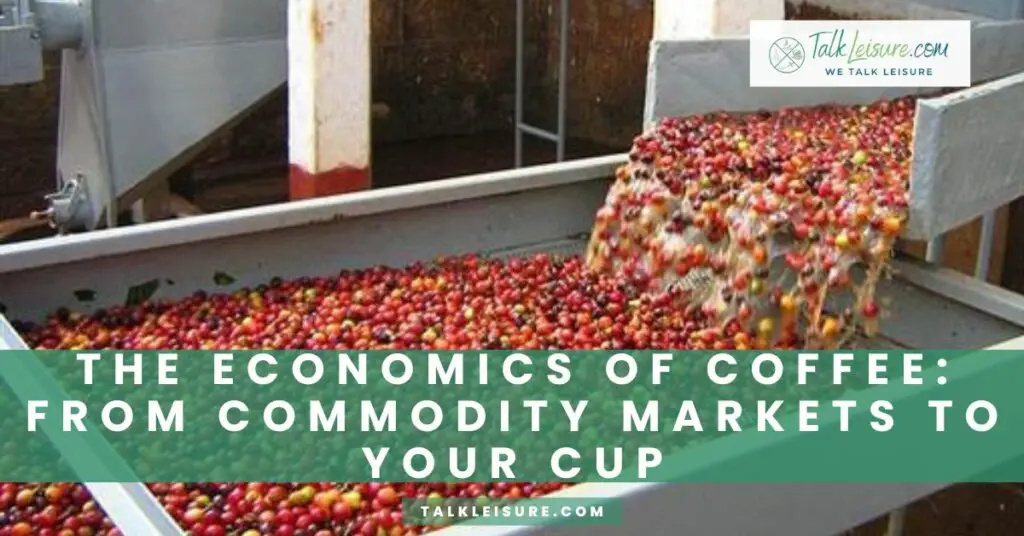The Coffee Industry and its Economic Significance
Explore the intricate journey of coffee, from its roots in commodity markets to the rich aroma in your cup.Delve into the economic forces shaping the global coffee trade, uncovering the intricate supply chains and market dynamics.
As a coffee lover, you may not fully realize the economic complexities that go into that rich cup of java you savor each morning.
The coffee industry plays a crucial role in global economies, with billions of dollars being generated every year.
It is not just about the morning buzz; it is about livelihoods, trade, and economic growth.
Coffee is one of the world’s most valuable traded commodities, second only to crude oil.
It is an essential cash crop for many countries, providing employment and income for millions of people worldwide.
From the coffee farmers in remote plantations to the baristas serving you your favorite latte, the coffee industry is a web of interconnected players contributing to the economic fabric of nations.
The Economics of Coffee: From Commodity Markets to Your Cup
Key Players in the Coffee Supply Chain
The coffee supply chain involves several key players who work together to bring that cup of coffee to your table.
It starts with the coffee farmers, who cultivate and harvest the coffee beans.
These beans then go through a series of processes, including drying, milling, and roasting, before they are ready for distribution.
Next, the coffee traders and exporters play a crucial role in connecting the coffee producers with the global markets.
They negotiate prices, ensure quality standards, and arrange shipments to coffee importers all around the world.
Coffee importers, in turn, work closely with coffee roasters and retailers to bring the coffee to local markets.
Roasters carefully select and blend beans to achieve the perfect flavor profiles, while retailers showcase and sell the end product to consumers like yourself.
Understanding the economic significance and the key players involved in the coffee supply chain gives us a deeper appreciation for that simple cup of coffee.
So next time you take a sip, remember the intricate economics behind it and the people whose livelihoods depend on this beloved beverage.
Coffee as a Commodity

The Concept of Coffee as a Traded Commodity
As a coffee lover, I find it fascinating to think about the journey coffee takes from the moment it is grown to the cup in my hand.
But what many of us may not realize is that coffee is not just a beloved beverage, it is also a global commodity that drives economic activity worldwide.
Coffee is traded on commodity markets, similar to other valuable resources like crude oil or gold.
The price of coffee can fluctuate based on factors such as supply and demand, weather conditions, and political stability in coffee-producing regions.
These fluctuations not only impact the price we pay for our morning cup, but also have significant implications for the livelihoods of coffee farmers and the economies of coffee-producing countries.
The coffee trade involves a complex network of players, including coffee farmers, traders, exporters, importers, roasters, and retailers.
Each step in the supply chain adds value to the coffee and contributes to the overall economy.
From the farmers who cultivate and harvest the beans, to the roasters who bring out the unique flavors, to the retailers who sell the final product, every player plays a vital role in the economic success of the coffee industry.
Next time you enjoy a cup of coffee, take a moment to appreciate the economic significance behind it.
Your simple act of sipping coffee supports the livelihoods of millions of people around the world and contributes to the global economy.
Coffee truly is more than just a beverage – it’s a global economic powerhouse.
6 Reasons Why Specialty Coffee Is Worth the Extra Cost
Coffee Production and Supply

Coffee-growing Regions and their Production Volumes
As a coffee enthusiast, I’m always intrigued by the economics behind my favorite beverage.
The journey coffee takes from the farm to my cup involves a complex network of players and has significant implications for the global economy.
Let’s explore the coffee-growing regions and their production volumes.
Coffee is grown in various regions around the world, with some of the top producers being Brazil, Vietnam, Colombia, Ethiopia, and Honduras.
These countries have ideal climates and fertile soils that contribute to the high-quality coffee they produce.
Brazil, as the largest coffee producer globally, accounts for a significant portion of coffee production.
Its vast coffee farms and advanced agricultural practices make it a dominant player in the coffee market.
Vietnam, on the other hand, is known for its robusta coffee, which is widely used in the production of instant coffee.
Colombia is renowned for its specialty arabica coffee, recognized for its rich flavor profiles.
Ethiopian coffee, often considered the birthplace of coffee, offers unique and distinct flavors that are highly sought after by coffee connoisseurs.
Honduras has emerged as a major player in the coffee industry, known for its excellent arabica beans.
These coffee-growing regions collectively contribute to the global coffee supply and play a vital role in the economic success of the industry.
The production volumes of these regions can be influenced by factors such as climate change, pests, diseases, and political stability.
As demand for coffee continues to rise, it’s crucial for these regions to navigate these challenges to ensure a steady supply of this beloved beverage.
Next time you enjoy a cup of coffee, take a moment to appreciate the hard work and dedication that goes into its production.
From the coffee farmers in Brazil to the exporters in Ethiopia, every step of the coffee journey contributes to the vibrant global coffee industry and its impact on the economy.
Coffee Market Dynamics

As a coffee enthusiast, I can’t help but be fascinated by the intricate world of coffee economics.
One key factor that influences the pricing of coffee is the coffee futures market.
This market allows buyers and sellers to trade contracts for the future delivery of coffee beans.
The coffee futures market provides a platform for participants to manage their price risks by locking in prices for future purchases or sales.
Coffee producers and suppliers can hedge against potential price fluctuations, while coffee roasters and retailers can secure a stable supply at predetermined prices.
The pricing of coffee futures contracts is influenced by a range of factors, including global supply and demand, weather conditions in coffee-growing regions, and geopolitical events.
Market speculators also play a role in driving price movements.
Understanding the coffee futures market is crucial for participants in the coffee industry.
It helps them navigate pricing uncertainties and make informed decisions that ensure the sustainability of their businesses.
Supply and Demand Fluctuations in the Coffee Market
The global coffee market is subject to supply and demand fluctuations, which have a direct impact on pricing.
Factors such as climate change, pests, diseases, and political stability can all influence the production volumes of coffee-growing regions.
When there is an abundant supply of coffee, prices tend to decrease due to the higher availability of the commodity.
Conversely, a decrease in supply can lead to price increases as demand outpaces production.
On the demand side, trends such as specialty coffee consumption and the rise of coffee culture in emerging markets can drive increased demand for high-quality coffee.
This increased demand puts pressure on supply chains to meet the growing needs of coffee lovers worldwide.
Understanding and anticipating supply and demand fluctuations is vital for coffee industry participants.
It allows them to adjust production, sourcing, and pricing strategies to ensure a steady supply of coffee to meet consumer demand.
In conclusion, the coffee futures market and supply and demand fluctuations are key elements of the coffee market dynamics.
By closely monitoring these factors, participants in the coffee industry can navigate pricing uncertainties and ensure a sustainable supply chain from commodity markets to your cup.
Coffee Trading and Price Discovery
As a coffee lover, I am constantly fascinated by the intricate world of coffee economics.
One key aspect that drives the pricing of coffee is the process of trading coffee on commodity exchanges.
Commodity exchanges, such as the Intercontinental Exchange (ICE), provide a platform for buyers and sellers to trade coffee contracts.
The process begins with coffee producers and suppliers offering their beans for sale on the exchange.
Buyers, such as coffee roasters and retailers, can then purchase these contracts, which represent a specific quantity and quality of coffee beans.
These contracts are standardized to ensure transparency and liquidity in the market.
Once the contracts are bought and sold, the physical delivery of coffee beans takes place at a specified future date.
It is important to note that most coffee contracts on commodity exchanges are settled financially rather than through physical delivery.
Price Discovery Mechanisms in the Coffee Market
Price discovery is a crucial aspect of the coffee market, and commodity exchanges play a significant role in this process.
The trading of coffee contracts on these exchanges helps determine the fair market price for coffee.
Various factors contribute to price discovery in the coffee market.
These include global supply and demand dynamics, weather conditions in coffee-growing regions, political events, and market speculation.
Each of these factors can influence the perceived value of coffee and thus impact its pricing.
Traders and market participants closely monitor these factors and analyze information to anticipate price movements.
This helps them make informed decisions regarding buying, selling, and hedging their coffee contracts.
Ultimately, the process of price discovery ensures that the coffee market remains efficient and reflects the true value of the commodity.
Conclusion
As a coffee lover, I am continually amazed by the intricate economics behind this beloved beverage.
The process of trading coffee on commodity exchanges and the mechanisms of price discovery are vital components of the coffee market.
By understanding and participating in these processes, we can ensure a fair and sustainable supply chain, from commodity markets to your cup.
Freuently Asked Questions
Where does coffee come from?
Coffee is derived from the seeds of the Coffea plant, which is native to tropical regions of Africa. Today, coffee is grown in various countries around the world, including Brazil, Vietnam, Colombia, and Ethiopia. Each region produces coffee with unique flavors and characteristics, influenced by factors such as climate, soil conditions, and farming practices.
What is the difference between commodity coffee and specialty coffee?
Commodity coffee refers to the mass-produced coffee that is traded on commodity exchanges. It is often characterized by its lower quality and standardized taste. On the other hand, specialty coffee is produced with a focus on exceptional quality and unique flavors. Specialty coffee is produced in smaller quantities, often sourced from specific regions or farms, and is usually roasted with care to highlight its distinctive taste profiles.
How are coffee prices determined?
Coffee prices are primarily determined on commodity exchanges, where coffee futures contracts are traded. These contracts represent agreements to buy or sell coffee at a predetermined price in the future. The prices are influenced by various factors such as supply and demand dynamics, weather conditions, and economic factors in producing countries. Additionally, factors like quality, origin, and market trends can also impact the price of specialty coffee.
What is fair trade coffee?
Fair trade coffee is a certification system that ensures coffee farmers receive fair prices for their products. Fair trade organizations work to establish minimum prices that cover the cost of sustainable production, as well as additional funds that go towards community development projects. By purchasing fair trade coffee, consumers can support farmers and promote sustainable and ethical practices in the coffee industry.
How does coffee consumption impact the environment?
Coffee production can have environmental impacts, including deforestation, water pollution, and greenhouse gas emissions. However, there are sustainable practices being implemented, such as shade-grown coffee, organic farming methods, and initiatives to reduce waste and carbon emissions. By choosing coffee that is sustainably and responsibly sourced, consumers can contribute to the preservation of ecosystems and minimize their environmental footprint.
Best Wishes!











